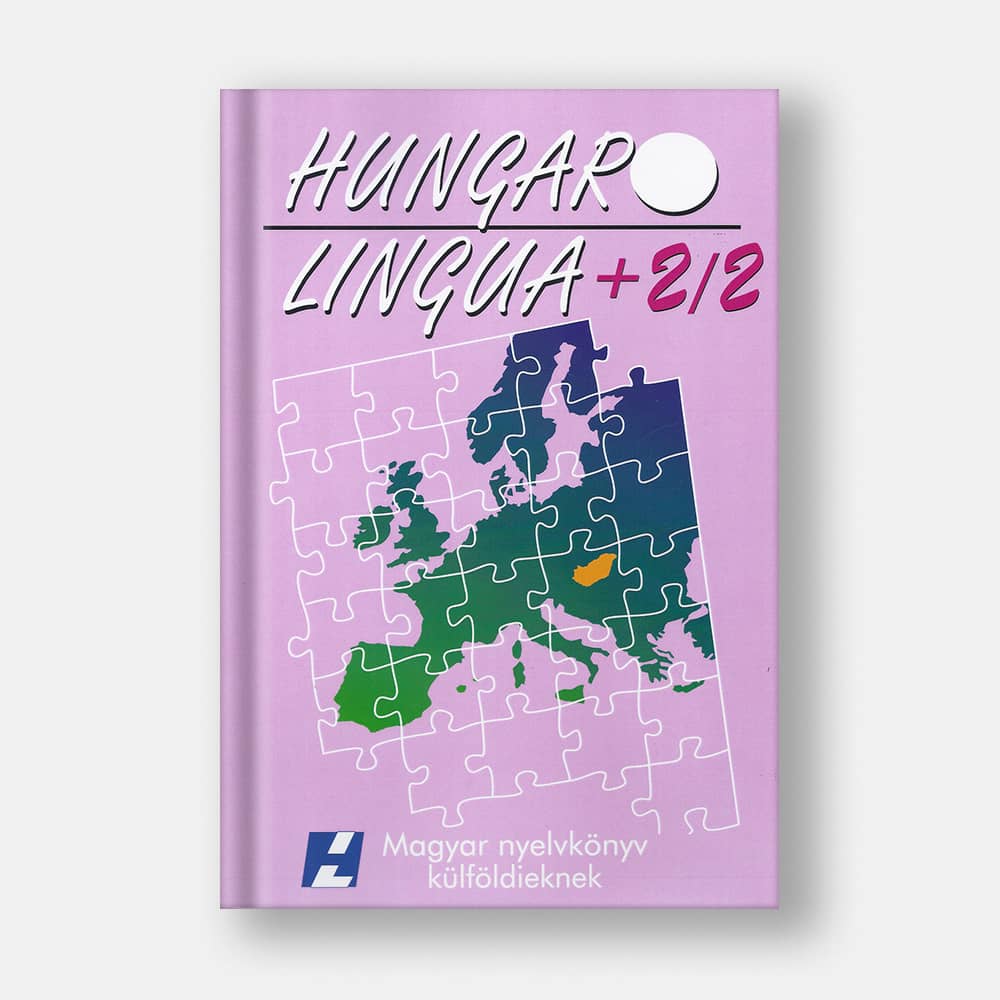- +36 52 532 594
- debrecen@nyariegyetem.hu
- 4032 Debrecen Egyetem tér 2

5.500 Ft
The third volume of the new edition of the ever popular Hungarolingua series. The book has been modified structurally, while some new content has been added to the earlier, 1993 edition. These modifications and additions are meant to make the book, which has been used successfully in Hungarian language teaching for several decades, more up-to-date in its vocabulary and more modern from a methodological point of view.
Thus, the earlier Hungarolingua 2 coursebook is now available in two separate volumes: Units 1–6 in Hungarolingua+ 2/1 and Units 7–12 in Hungarolingua+ 2/2. Each unit from the previous edition has been extended with a new section that aims at a more thorough acquisition of the grammatical, lexical and communicational focus of that particular unit, while it also provides more up to date information on Hungarian culture. All the newly added parts consist of three modules: exercises, grammar explanations in English, and a glossary. The exercises are based on the grammar, vocabulary, texts, and situations of the given unit, and their goal is a systematic development of the learner’s comprehension and production skills, as well as their knowledge of grammar and vocabulary.
The first four exercises in each unit tackle the four skills in the following way: 1) reading comprehension, 2) listening comprehension, 3) speaking, 4) writing. These are followed by grammar (5, 6) and vocabulary (7, 8) activities. The instructions to the exercises are also given in English, thereby facilitating individual work. Grammar explanations in English summarize the system and rules of the new grammar points of the unit, extended with further examples. The aim here is to provide easily comprehensible, practical rules so that learners with little or no linguistic background could also understand and apply them. After each grammar explanation point, a page reference is given, indicating where the phenomenon occurs first in the unit and where the corresponding activities can be found.
The glossary lists the words from the unit and their English equivalents in alphabetical order, allowing non-native speakers of English to add the equivalents of the words in their own language. Another helpful addition to the book is the review section after Units 3 (halfway through the volume) and 6 (at the end), which facilitates further practice of what has been acquired thus far. The review sections consist of 6 exercises each and focus on practising reading comprehension (1), writing (2), the grammar (3, 4) and the vocabulary (5, 6) of the previous three units in a new context, which should guide the learner towards a deeper acquisition of the target language. The final section of Hungarolingua+ 2/1 offers grammar exercises (comprising the activities of the former grammar workbook) broken down to units, thus providing an additional chance for even more practice.

2025 © nyariegyetem.hu | All rights reserved